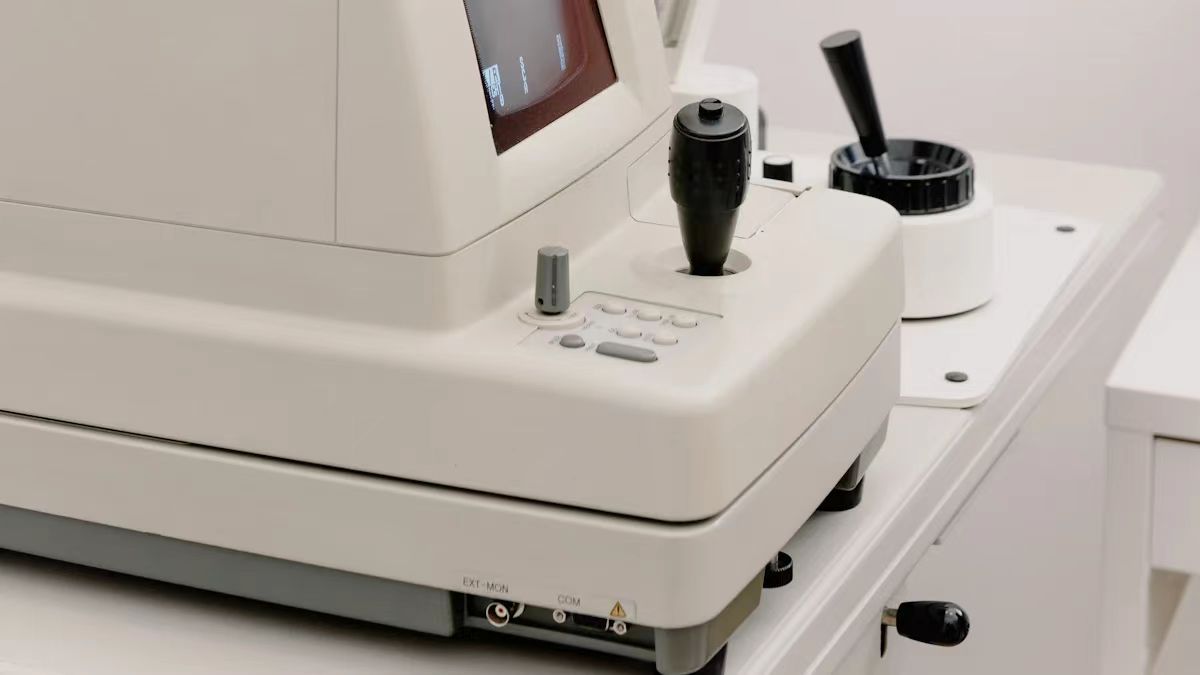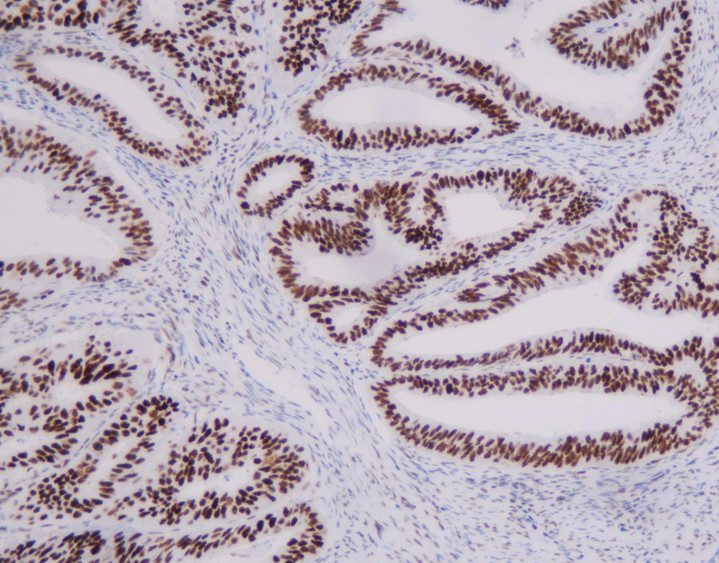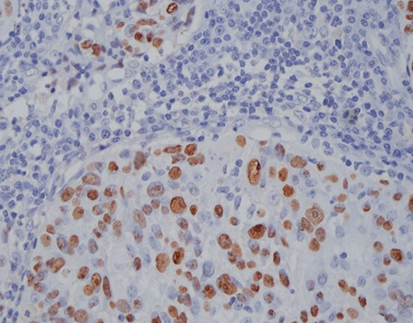How EBER Probe Testing Works
 2024-06-06
2024-06-06
By admin

In the realm of medical diagnostics, understanding EBER Probe Testing is crucial. The identification of latent Epstein-Barr virus (EBV) infections relies heavily on this approach, which detects EBV in tissue samples. When it comes to diagnosing different disorders, EBER Probe testing is crucial since it may detect the presence of EBV-encoded RNA. The purpose of this blog is to explore EBER Probe testing in detail, explaining how it works, what it’s used for, and what the future holds.
What is EBER Probe Testing?
In the realm of medical diagnostics, EBER Probe testing plays a critical role in identifying latent Epstein-Barr virus (EBV) infections. A potent diagnostic tool, the EBER Probe may identify diseases by detecting EBV-encoded RNA in tissue samples. Let’s go into the meaning and historical relevance of EBER Probe testing to uncover its core.
Definition of EBER Probe
Understanding what EBER and a Probe are individually is key to grasping the concept of an EBER Probe. EBER, short for Epstein-Barr encoding region, refers to specific RNA sequences within the virus. On the other hand, a Probe is a molecular tool designed to detect and bind to complementary sequences, such as those found in EBV.
What is EBER?
EBER, crucial for detecting latent EBV infection, consists of RNA sequences abundantly expressed in latently infected cells. This unique feature allows for precise identification using specialized probes.
What is a Probe?
A Probe, in this context, serves as a molecular detective. It seeks out and binds specifically to its target sequence—in this case, the abundant EBER transcripts within EBV-infected cells—facilitating their detection with high accuracy.
History of EBER Probe Testing
The development and early applications of EBER Probe testing have significantly advanced diagnostic capabilities over time. Understanding this history sheds light on the evolution and impact of this essential diagnostic tool.
Development of the Test
The inception of EBER Probe testing marked a breakthrough in detecting latent EBV infections. Researchers used cutting-edge technologies to come up with accurate ways to find EBER transcripts in tissue samples.
Early Uses in Diagnostics
Initially utilized for research purposes, early applications of EBER Probe testing showcased its potential in diagnosing various EBV-related conditions. Medical workers’ ability to find latent diseases changed the way they diagnose and treat patients.
How EBER Probe Testing Works

In order to fully understand the importance of EBER Probe testing in medical diagnosis, it is necessary to know how the process works. Let’s look into how this method works in more detail to help us understand how to test it and what the results mean.
The Testing Process
Sample Collection
To initiate the EBER Probe testing, the first step involves collecting tissue samples from individuals suspected of harboring latent Epstein-Barr virus (EBV) infections. These samples are carefully collected and kept so that they can be analysed later to find EBV-encoded RNA.
Hybridization Process
Following sample collection, the hybridization process takes center stage in EBER Probe testing. In this very important step, special probes bind to matching sequences in the tissue samples. The probes find and bind to particular RNA sequences linked to EBV through this molecular interaction, which makes it possible to detect them very accurately.
Interpreting Results
Positive Results
Upon completion of the hybridization process, positive results indicate the presence of EBV-encoded RNA in the tissue samples. In this very important step, special probes bind to matching sequences in the tissue samples. The probes find and bind to particular RNA sequences linked to EBV through this molecular interaction, which makes it possible to detect them very accurately.
Negative Results
Conversely, negative results signify the absence of detectable EBV-encoded RNA in the tissue samples subjected to EBER Probe testing. Even though negative results may make people less worried about latent EBV infections, they also show that we need to look into other possible reasons of any symptoms or medical problems that are already there. When doctors get negative results, they have to look into other testing methods to find the real health problems.
Throughout EBER Probe testing, understanding both positive and negative results is crucial for drawing meaningful conclusions about an individual’s health status. By breaking down these results, doctors can make decisions about how to care for patients and what treatments to use based on true diagnostic information.
Applications of EBER Probe Testing
Detecting Epstein-Barr Virus
When it comes to detecting the Epstein-Barr Virus (EBV), EBER Probe testing emerges as a valuable diagnostic tool. Healthcare workers can use this method to find EBV-encoded RNA in tissue samples, which helps them correctly identify people who have latent EBV illnesses. EBER Probe testing is important for more than just finding things; it’s a key part of identifying many EBV-related illnesses.
Importance in Hodgkin Lymphoma
In the realm of medical diagnostics, the importance of EBER Probe testing in Hodgkin Lymphoma cannot be overstated. By utilizing this innovative technique, medical professionals can effectively detect and label all latent EBV-infected cells within tissue sections. Using EBER Probe testing gives important information about the amount and spread of EBV-encoded RNA, which helps doctors make accurate diagnoses and create personalised treatment plans for people with Hodgkin Lymphoma.
Other EBV-Related Conditions
Beyond Hodgkin Lymphoma, EBER Probe testing proves instrumental in identifying various other EBV-related conditions. From EBV-positive lymphoblastoid cell lines to EBV-associated undifferentiated nasopharyngeal carcinomas, this diagnostic method labels all latent EBV-infected cells with remarkable accuracy. By finding EBV-encoded RNA in formalin-fixed, paraffin-embedded tissues, EBER Probe testing gives doctors useful information about many EBV-related conditions, which helps them make better decisions and give each patient more personalized care.
Advantages of EBER Probe Testing
By showing the benefits of EBER Probe testing, we can see how sensitive and specific it is at finding hidden EBV illnesses. This test is unique because it can correctly find large amounts of EBER transcripts in tissue samples, showing that it is very sensitive to even very small amounts of EBV-encoded RNA. Moreover, the specificity of EBER Probe testing ensures precise detection and labeling of latent EBV-infected cells, distinguishing them from non-infected counterparts with exceptional clarity.
Sensitivity
The sensitivity of EBER Probe testing lies in its capability to detect even minute quantities of EBER transcripts present in latently infected cells. With this increased sensitivity, doctors can quickly find hidden EBV infections with unmatched accuracy. This allows for quick evaluation and personalised treatment plans that meet the specific health needs of each person.
Specificity
In addition to its sensitivity, the specificity of EBER Probe testing sets it apart as a reliable diagnostic tool for detecting latent EBV infections. Through its specific binding mechanism to complementary sequences within tissue samples, this method accurately distinguishes between infected and non-infected cells. Because EBER Probe testing is very specific, it makes sure that there aren’t many false positives or blanks. This gives doctors reliable results that they need to make good clinical choices.
By looking into how and why EBER Probe testing can help with diagnosing Epstein-Barr virus-related conditions, doctors learn a lot about how to use this new method to make accurate diagnoses and effective treatment plans that are specific to each patient’s needs.
The high-tech company Celnovte, which was founded in 2010, does research, development, production, and sales of precise tumour detection tools and chemicals. The business has a strong system for production, quality control, and research and development that meets GMP standards. It has clean production workshops of grade 10,000 and 100,000, as well as supporting research, production, and quality inspection equipment. Celnovte has earned ISO9001, ISO13485, and EU CE-ID certifications, showing its dedication to quality and new ideas in the field of tumour research tools and materials.
While the specific EBER probe test is not mentioned in the provided context, Celnovte has a comprehensive solution for immunohistochemistry, with more than 460 primary antibodies, independently developed secondary antibody detection systems, and more than 200 immunohistochemistry quality control products. They also have fully automated staining platforms to provide customers with high-quality staining results. IHC stainers and other research instruments are provided by Celnovte. Their Antibody R&D Center specializes in the development of IVD-grade immunohistochemistry primary antibodies, with two major development platforms for murine monoclonal antibodies and human monoclonal antibodies. This extensive experience and expertise in antibody development and immunohistochemistry suggest that Celnovte is well-equipped to conduct complex diagnostic tests such as the EBER probe test.
Future of EBER Probe Testing
Advancements in Technology
Improved Detection Methods
In the realm of medical diagnostics, continuous advancements in technology pave the way for enhanced detection methods in EBER Probe testing. These improvements focus on refining the precision and sensitivity of detecting Epstein-Barr virus (EBV) latent infections. By leveraging innovative technologies, healthcare professionals can now identify and label all latent EBV-infected cells with unparalleled accuracy. The evolution of detection methods not only streamlines diagnostic processes but also ensures reliable results crucial for guiding tailored treatment strategies.
Broader Applications
As technology progresses, EBER Probe testing expands its reach to encompass broader applications beyond conventional diagnostic practices. The versatility of this method allows for its utilization across diverse tissue samples, enabling comprehensive detection of EBV-encoded RNA in various medical contexts. From EBV-positive lymphoblastoid cell lines to EBV-associated undifferentiated nasopharyngeal carcinomas, EBER Probe testing offers a universal approach to identifying latent EBV infections with exceptional clarity. With its broader applications, this innovative diagnostic tool equips healthcare providers with invaluable insights into addressing a wide spectrum of EBV-related conditions effectively.
Potential Developments
New Diagnostic Tools
Looking ahead, the future of EBER Probe testing holds promising prospects for the development of new diagnostic tools aimed at enhancing detection capabilities further. These cutting-edge tools are designed to revolutionize how healthcare professionals identify and interpret EBV-encoded RNA within tissue samples. By integrating state-of-the-art technologies, these diagnostic innovations seek to elevate the accuracy and efficiency of EBER Probe testing, setting new standards for diagnosing latent EBV infections with unprecedented precision.
Enhanced Accuracy
In the realm of medical diagnostics, continuous advancements in technology pave the way for enhanced detection methods in EBER Probe testing. The primary goal of these modifications is to improve the detection of latent Epstein-Barr virus (EBV) infections. Using new tools, doctors can now find and name all latently infected cells with EBV with a level of accuracy that has never been seen before. The improvement of spotting methods not only speeds up the testing process but also makes sure that results are accurate, which is important for planning personalised treatment plans.
Broader Applications
As technology progresses, EBER Probe testing expands its reach to encompass broader applications beyond conventional diagnostic practices. This method can be used with a wide range of tissue samples because it is flexible. Because of this, there are several medical contexts in which EBV-encoded RNA can be located. From EBV-positive lymphoblastoid cell lines to EBV-associated undifferentiated nasopharyngeal carcinomas, EBER Probe testing offers a universal approach to identifying latent EBV infections with exceptional clarity. With its wider range of uses, this cutting-edge diagnostic tool gives doctors and nurses important information about how to effectively treat a wide range of EBV-related diseases.
Potential Developments
New Diagnostic Tools
Looking ahead, the future of EBER Probe testing holds promising prospects for the development of new diagnostic tools aimed at enhancing detection capabilities further. The most advanced tools on the market are intended to change the way doctors find and understand EBV-encoded RNA in tissue samples. By using cutting-edge technologies, these diagnostic advances aim to improve the precision and accuracy of EBER Probe tests, making it possible to find latent EBV infections with never-before-seen accuracy.
Enhanced Accuracy
In the landscape of medical diagnostics, achieving enhanced accuracy remains a focal point for advancing EBER Probe testing methodologies. The ways that data is studied and screened are being worked on by academics to make them more accurate.Health care workers are always making small changes to EBER Probe testing as a whole. This will allow them to make more accurate diagnoses and create personalized treatment plans that meet the needs of each patient.
Anticipating potential enhancements to EBER Probe testing and welcoming technical development bode well for a future brimming with innovative approaches to diagnosing Epstein-Barr virus-related illnesses. By embracing new diagnostic techniques and being at the forefront of innovation, healthcare practitioners may utilize the groundbreaking potential of EBER Probe testing to give their patients the best treatment possible and enhance their own health for the future.
EBER Probe testing is one of the most important ways for doctors to find Epstein-Barr virus (EBV) cases that have been dormant for a long time. This is very important for helping doctors diagnose patients because it exactly identifies the RNA that is made by EBV. Given that immunotherapy works well for treating EBV-positive stomach cancer, the future looks bright for using these new methods to improve patient care.
RELATED PRODUCTS









